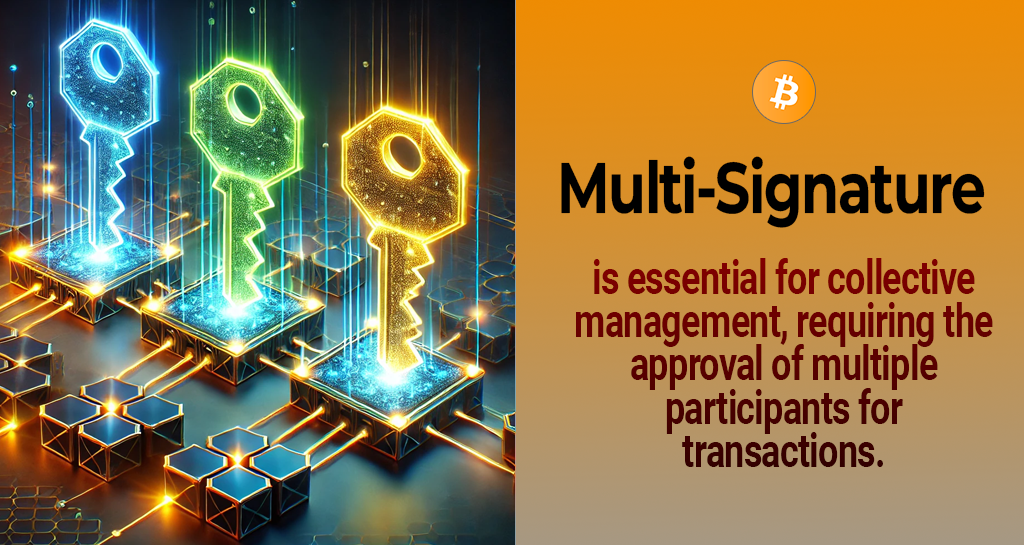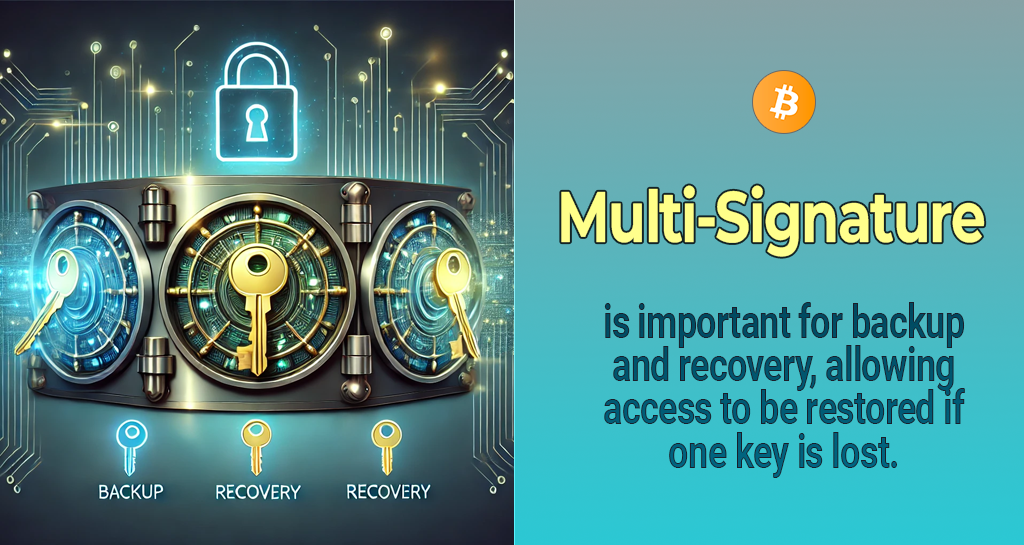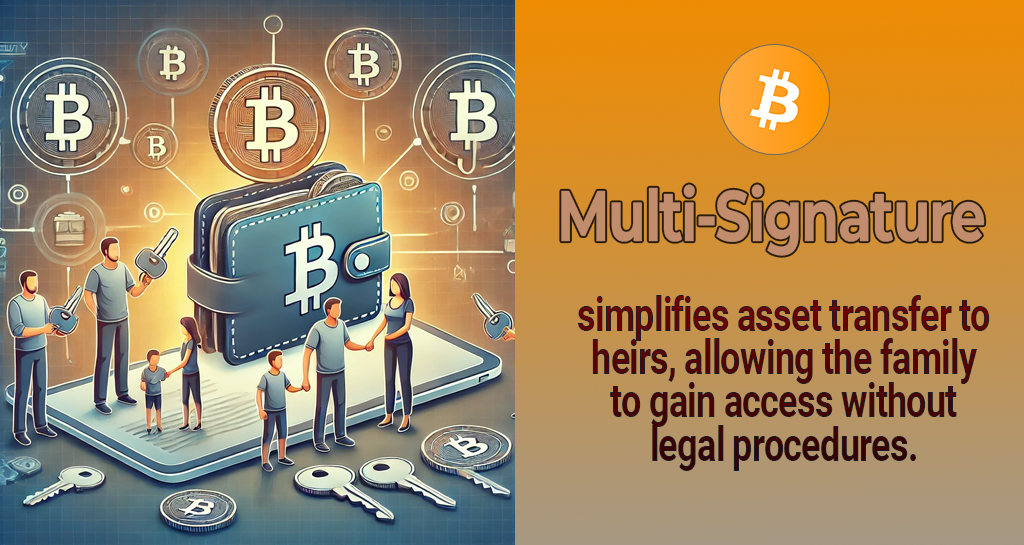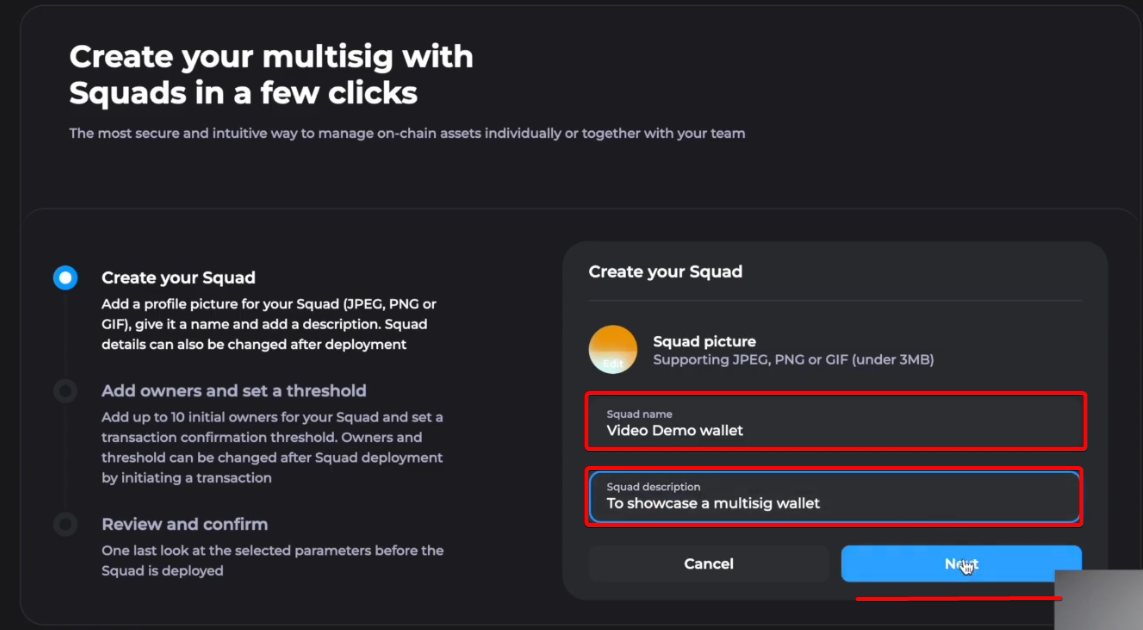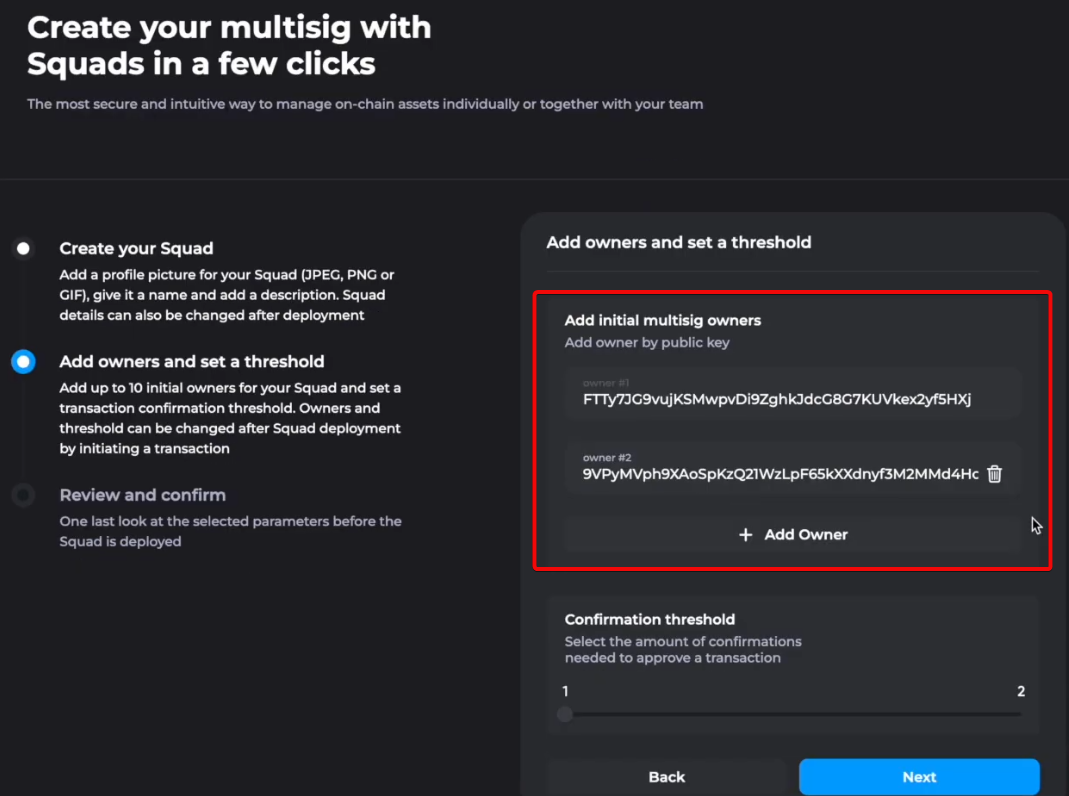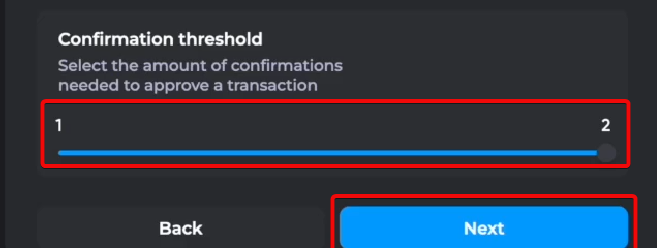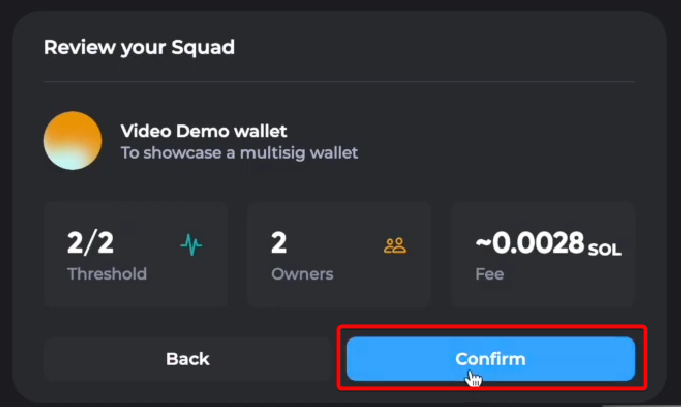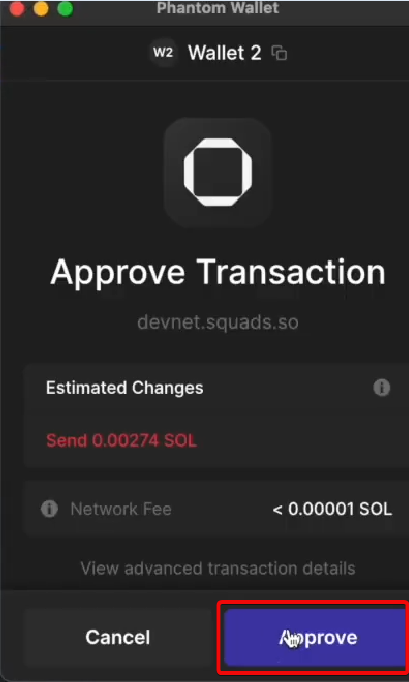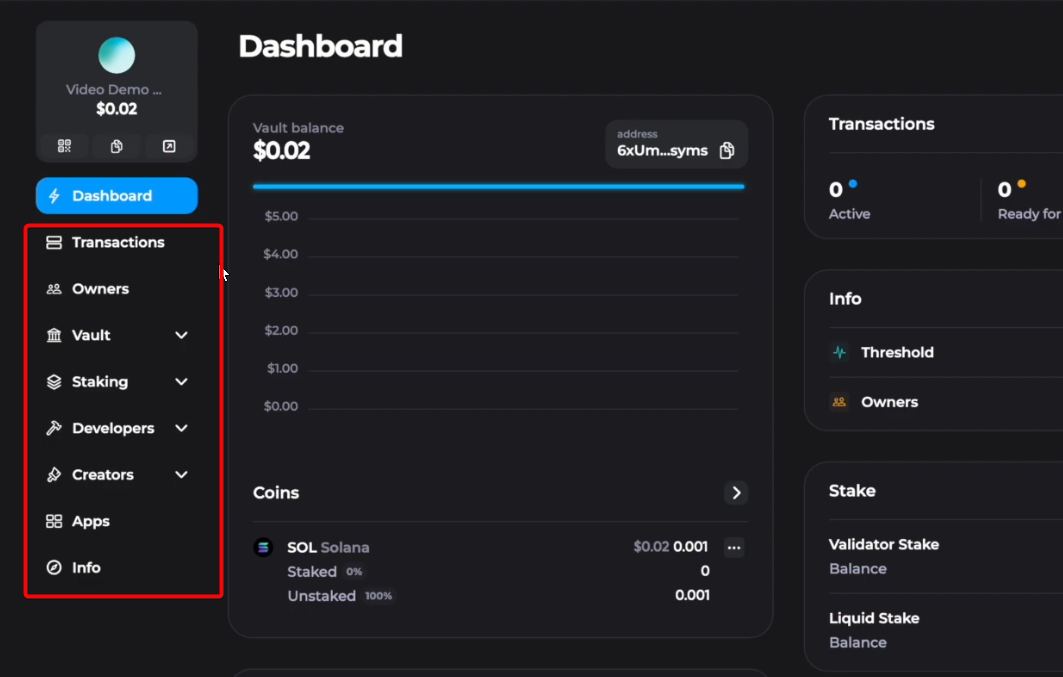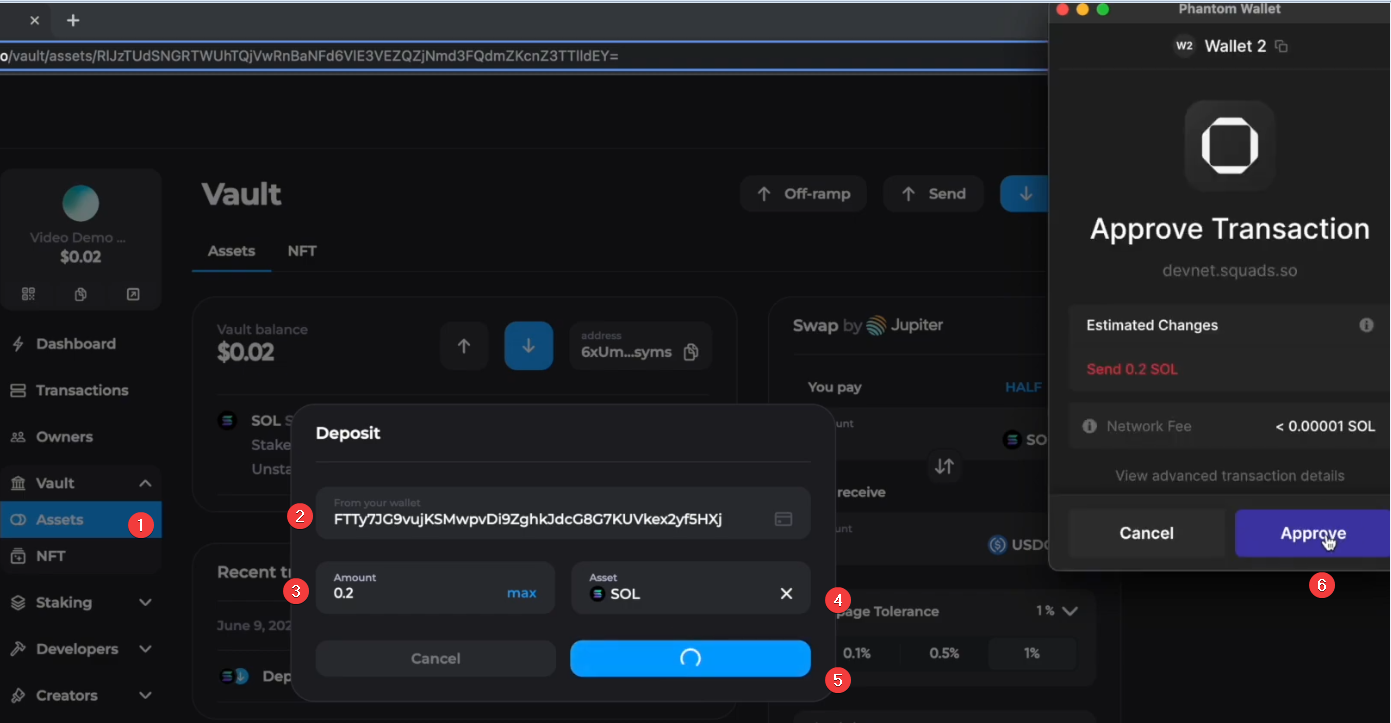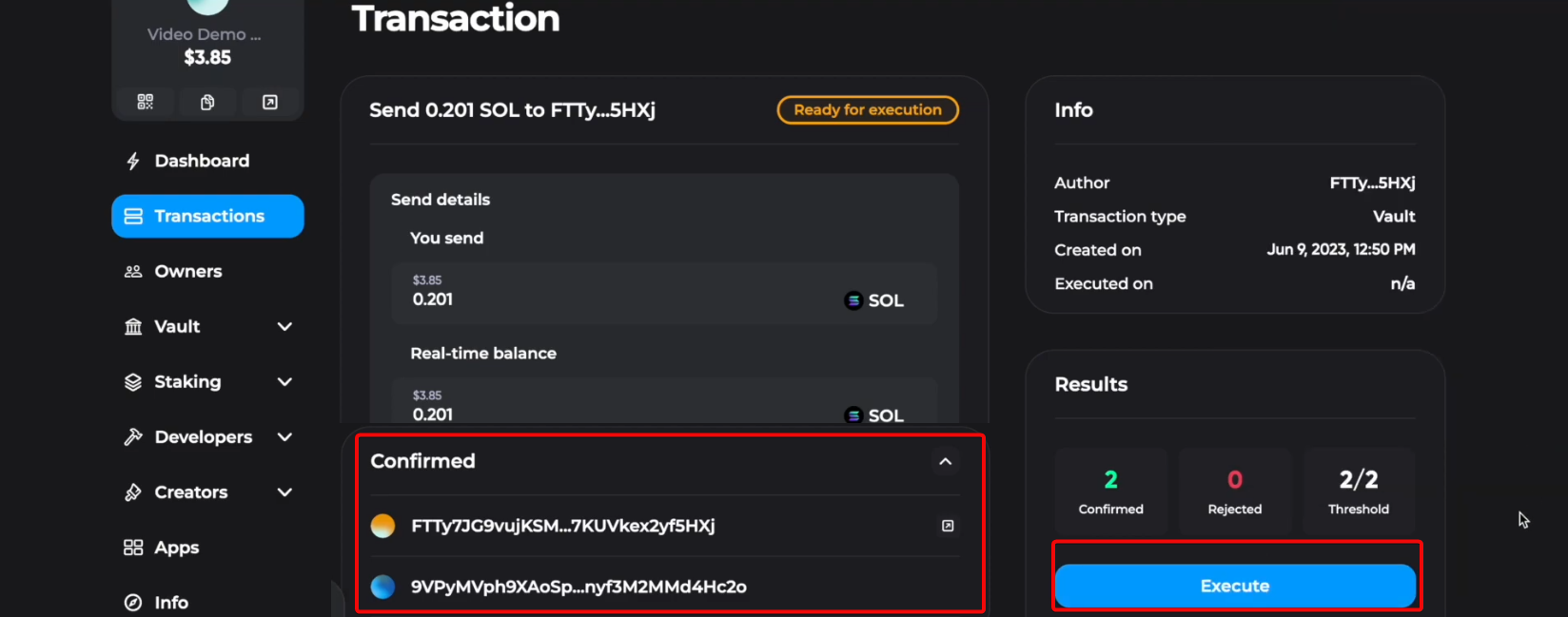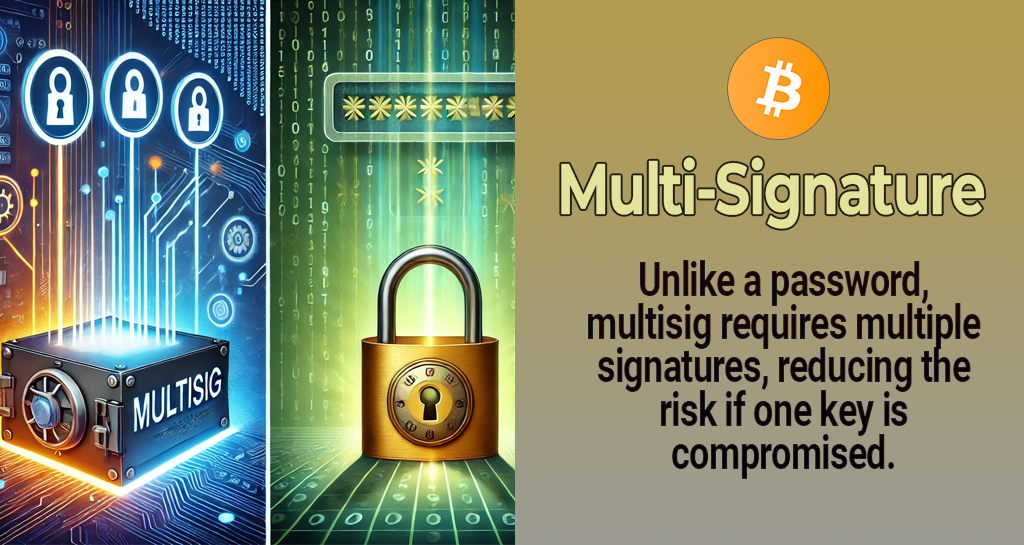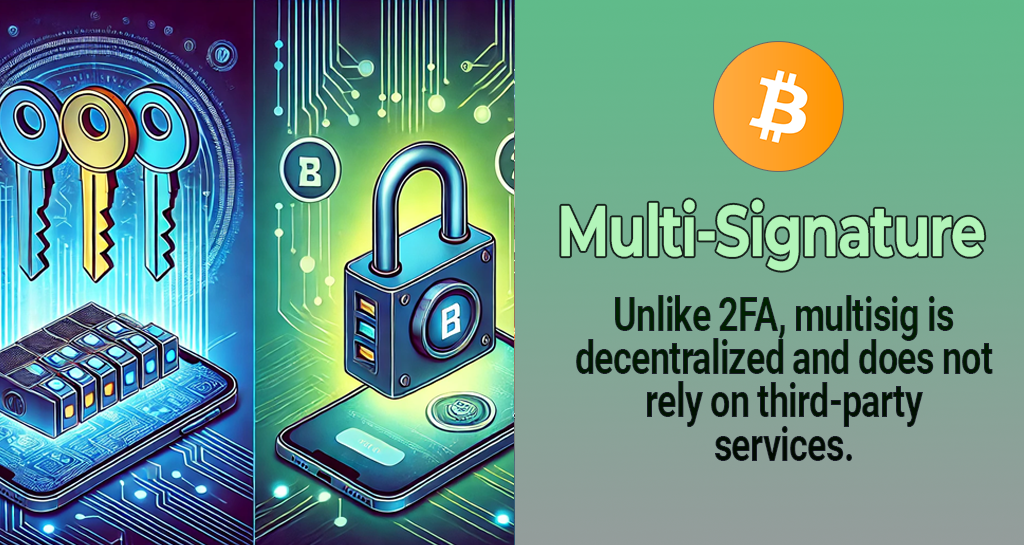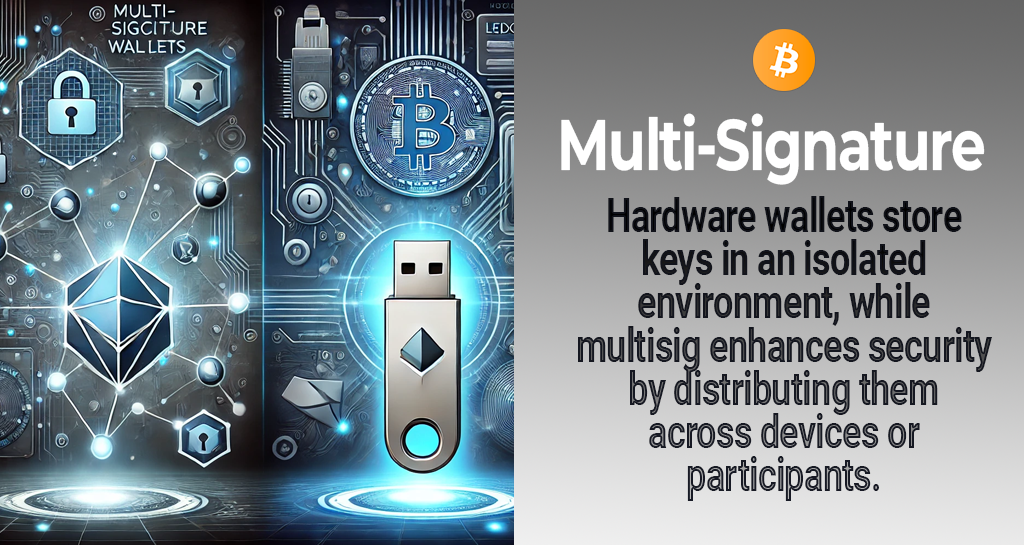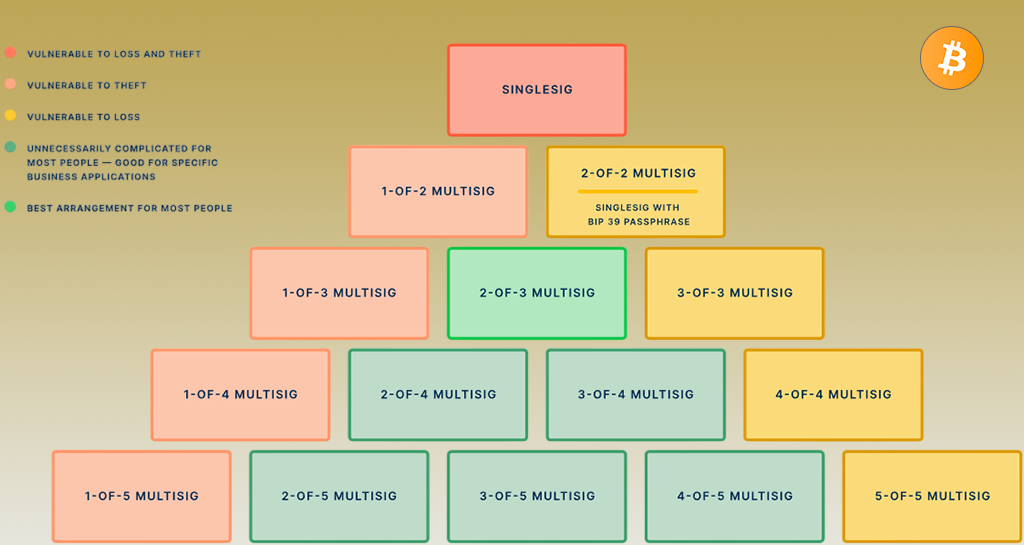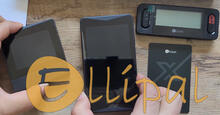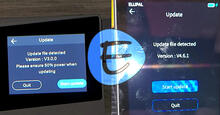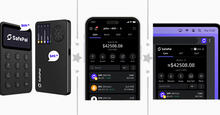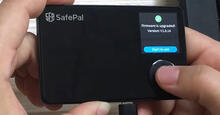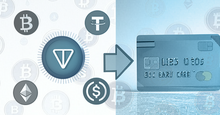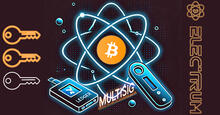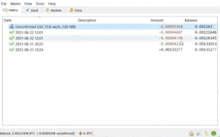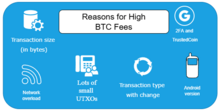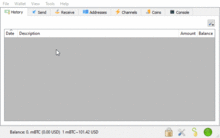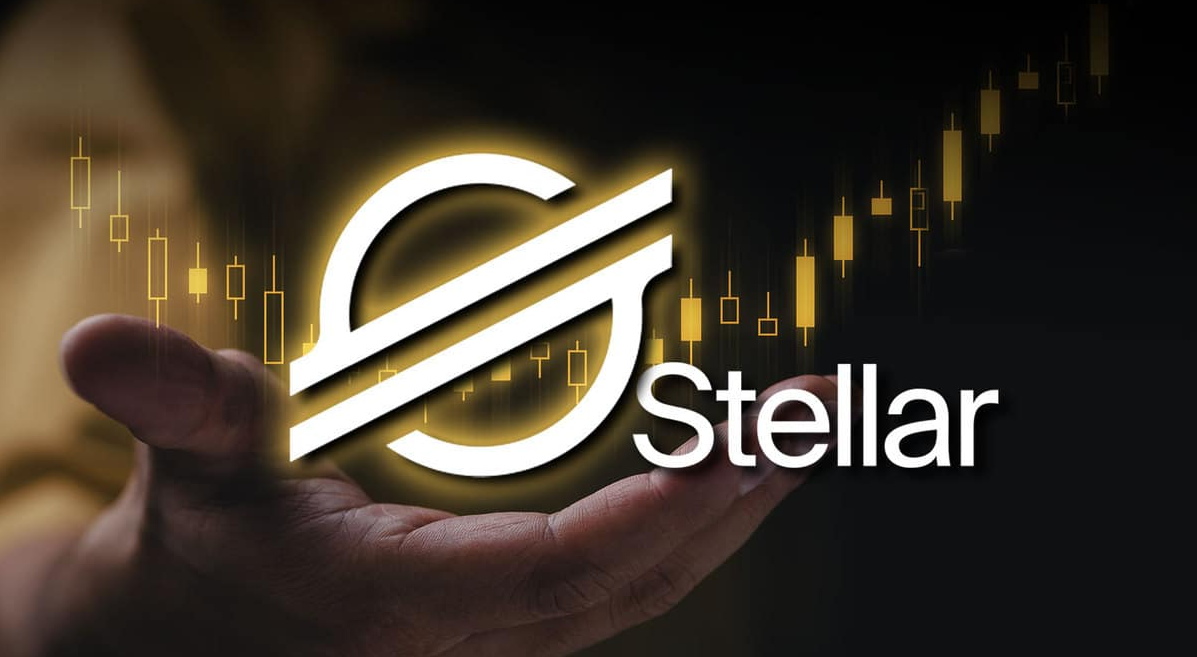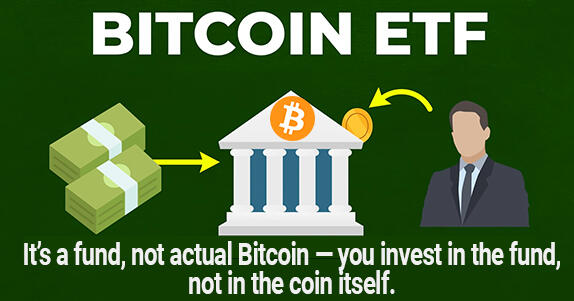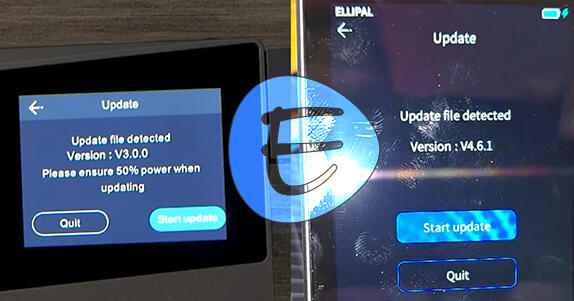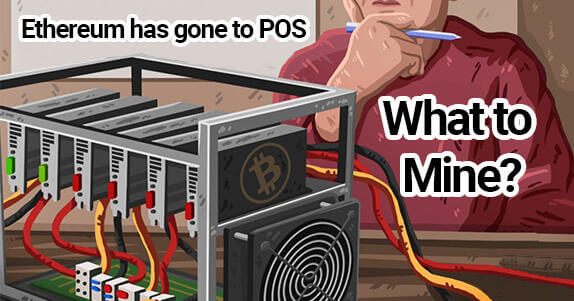Multisig wallets: how to protect crypto from hackers and errors?
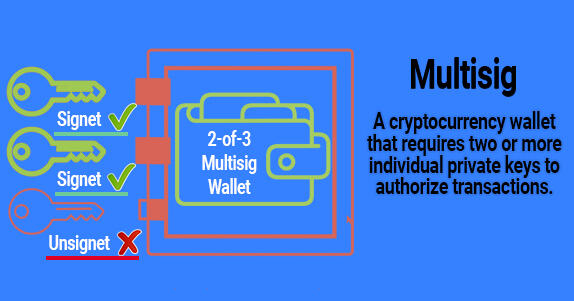
What is Multisig and Why is it the Key to Secure Cryptocurrency?
A multi-signature wallet is a cryptocurrency storage that requires multiple keys for a single transaction. It works like a multi-key safe, where you need, for example, 2 of 3 keys to open it.
The principle of work in cryptocurrency:
The "M of N" scheme is configured, where M is the minimum number of signatures for a transaction, and N is the total number of existing keys.
Examples:
- 2 of 3: 3 of 4 keys needed for transaction.
- 4 of 5: 4 out of 5 keys required.
This increases security because the transaction requires the consent of two or more parties.
5 Real-World Use Cases for Multisig Wallets
Multi-signature wallets are actively used in various areas. For example, they can be used for a family budget. A family can create a multi-signature wallet with the "2 out of 3 signatures" setting. To conduct a transaction, the consent of two of the three participants (for example, a husband, wife, and an adult child) is required.
Looking ahead, this technology may not be suitable for everyone. Let's look at real-life examples of use and setup to help you make an informed decision.
Multisig: Your Armor from Hackers
The main advantage of multisig wallets is increased protection against hacking. It is not enough for an attacker to gain access to one private key - they will need to hack several devices or accounts.
In addition, if the user loses one of the keys, he/she retains access to the funds through the others, which prevents complete loss.
How Multisig Protects Against Scammers
This is important for businesses: transactions can only be approved by a group of people (e.g. 2 out of 3 or 3 out of 5). The risk of unauthorized spending or fraud by one person is eliminated.
Backup and Restore
Distributing different keys across multiple parties or devices reduces the risk of losing access. If you lose one of the three keys, you can still access your funds if you have the remaining two.
Keys can be distributed between devices, physical safes, or even trusted individuals.
Using Multi-Signature Wallets for Seamless Asset Transfer to Heirs
Multi-signature wallets are useful for transferring funds to heirs. For example, signatures can be set up so that family members have keys, making it easier to access assets without having to go through complex legal procedures. This ensures that funds are available even in the event of unforeseen circumstances.
Author's note:
"Multi-signatures are a great tool for increasing security, but they are not always suitable for beginners. The complexity of setup and additional fees may seem excessive if you are just starting out with cryptocurrencies. For most purposes, a hardware wallet or cold storage remain reliable and easy to use methods."
Even though multi-signatures may seem complicated, they can be a key solution in certain situations. It's important to understand their features to see if they're right for you.
Now that you know how multisig provides security, let's look at how to set it up. Let's create a new wallet for the Solana blockchain.
Setting up multisig wallets for Solana
Let's look at a practical example. One of the popular solutions for the Solana blockchain is the Squads platform. This tool is especially attractive for managing assets in DeFi, NFT, and Web3 applications.
Warning: Do not attempt to use multisig if you do not understand how public keys, scripts, and recovery mechanisms work. This may result in loss of funds.
Squads provides a multisig smart contract wallet for:
- storage of team funds, programs, validators, tokens, and NFT collections;
- joint asset management;
- settings for the number of signatures required to confirm transactions.
How to create a Squad multisig?
Go to v3.squads.so (for the main network) or devnet.squads.so (for the test network).
A window for creating a Multisig wallet will open.
Come up with a name and add a description. Click Next. Specify participants (transaction signatories).
Configure how many signatures are needed to confirm transactions. We chose 2.
After checking the data, sign the transaction.
After pressing Confirm button will open Phantom Wallet.
Click Approve. You have opened a multi-signature wallet for Solana.
Squads Features
The dashboard allows you to create and confirm transactions, manage participants, store funds in the Vault, stake SOL, work with tokens, NFTs and programs. Integrations with third-party applications and detailed wallet information are also available.
How to deposit funds?
You can send SOL directly to the wallet address or use the Vault tab to deposit funds via the Deposit button. NFTs are added similarly via the NFT tab.
How to send a transaction?
In the Vault tab, click Send, specify the amount, address and create the transaction. It will immediately appear in the queue for confirmation.
You will see an active transaction that requires multiple signatures. Once both parties have signed it, the transfer can be completed.
Connect the second wallet that was added as a member (for example, open Squads in another browser or on another device).
Sign the transaction with the second wallet.
After receiving all the required signatures, the Execute button will become active.
Click Execute to send funds to the specified address.
You now have a Solana multisig wallet. The Squads platform is just one example of how multisig can simplify crypto asset management. Its features, such as DeFi and NFT support, make it a useful tool for Solana projects. However, similar solutions are available for other blockchains. Let's take a look.
How to Set Up Multisig for Bitcoin
Electrum is a popular Bitcoin wallet that supports multisig, which allows for increased security by distributing control among multiple parties. Multisig is suitable for long-term storage of large amounts, but requires experience and time to set up.
In this article, you will learn how to set up multisig in Electrum using hardware wallets. This process will help you protect your bitcoins from hacks and physical access, ensuring a high level of security for your funds.
10 Best Multisig Wallets
The table shows examples of multisig wallets for various assets and their features:
|
Cryptocurrency |
Examples |
Features |
|
Bitcoin |
Electrum, Bitcoin Core, Sparrow Wallet, Casa |
Time-tested solutions. |
|
Ethereum |
Safe Global, OpenZeppelin Defender |
Convenient for DeFi and DAO, flexible access settings. |
|
Solana |
Squads |
Simplifies shared asset management. |
|
Polkadot |
Mimir, Multix by Chainsafe, Nova Spektr, Polkasafe |
Convenient for complex multisig operations. |
|
Zcash |
Zcash Full Node and CLI |
Linux only. |
|
Cardano |
Summon Platform |
Tools for working with DAO on Cardano. |
|
Tezos |
Octez, TzSafe |
Convenient for managing Tezos tokens. |
|
NFT |
Safe Global |
Group management, anti-theft protection. |
|
DeFi |
Safe Global |
Control access to smart contracts and liquidity. |
|
Ripple (XRP) |
XRP Ledger |
Convenience for corporate users. |
|
Litecoin |
Totalsig |
Simple interface for LTC. |
|
Monero |
Rhino |
MPC-based cost control. |
|
Tron |
TronLink |
TRC-20 token management, DeFi integration. |
|
EOS |
Cleos |
Command line tool for EOS. |
The following table displays the features of popular wallets with this functionality:
Popular multisig wallets
|
Name of the wallet |
Website |
Platform |
Cryptocurrencies |
|
bitcoincore.org |
Windows, MacOS, Linux |
Bitcoin |
|
|
Electrum |
electrum.org |
Windows, OSX, Linux, Android |
Bitcoin |
|
Ledger |
ledger.com |
Hardware |
1500+ (multisig for BTC only) |
|
Safe Wallet |
safe.global |
Windows, OSX, Linux, browser , Android, iOS |
ETH, all tokens on this blockchain, including NFT |
|
Armory |
bitcoinarmory.com |
Windows, MacOS, Linux |
Bitcoin |
|
BitPay |
bitpay.com |
iOS |
BTC, ETH, BCH, LTC, WBTC, DOGE, SHIB, USDC, BUSD, DAI, GUSD |
|
BitGo |
bitgo.com |
Web |
BTC, ETH, BCH, LTC, ZEC, DASH, 400+ cryptocurrencies |
Thus, Bitcoin Core, Electrum and Ledger are considered the three pillars of security for BTC.
Now let's compare the experience of using multisig with other methods of asset protection.
Multisig vs 2FA and hardware wallets: what to choose for maximum protection?
Unlike a password or passphrase, where a single key provides access, multisig eliminates the risk of losing funds if a single key is compromised.
Example: losing one of the 5 keys will not prevent you from using a wallet with the 3 of 5 setting. This makes multisig more flexible and secure than a regular password.
Multisig vs two-factor authentication (2FA)
Both technologies are aimed at enhancing security, but 2FA protects access to accounts by requiring a second factor (e.g. SMS code, authenticator app). Multisig, on the other hand, is used in blockchain for asset management: signatures from multiple keys are required to conduct a transaction.
Multisig vs Hardware Wallets
Hardware wallets are devices that store private keys in an isolated environment, protecting them from attacks. Multisig adds another layer of protection by distributing keys across multiple devices or participants. These technologies can be combined: multisig with hardware wallets provides maximum security, as each key is stored on a separate, secure device.
What does multisig look like for Bitcoin and Ethereum
Example of a multisig address for Bitcoin: 3Q5eUczJ9e8gsLz5N6fC9fY8cnKNW7z9wA. This is an address using the P2SH (Pay-to-Script-Hash) format, which allows you to create multisig addresses. Such wallets can be created in Electrum and Bitcoin Core.
In Ethereum, multisig addresses are often created via smart contracts, such as using contracts like Gnosis: MultiSig. An example of a multisig address for Ethereum:
Gnosis Safe allows owners to manage funds using multiple signatures. In order to conduct a transaction, it is necessary to obtain the consent of a certain number of signatories, which makes such a wallet much more secure than regular single-key wallets.
Multisig: What mistakes can cost you money?
This section will look at the disadvantages and dangers of using this technology. Some schemes disproportionately increase the risk of theft, while others increase the risk of loss. For example, the 1-of-5 scheme: if at least one key is compromised, attackers gain full access to the funds. This makes the protection less reliable.
2-of-3 multi-signature mitigates both risks with minimal complexity because a transaction requires two parties to agree, eliminating a single point of vulnerability.
Comparison of different schemes. Source unchained.com
To ensure maximum multi-signature security, it is recommended to store keys in different geographic locations, preventing two of them from being lost or compromised at the same time.
Setting up multi-signature wallets requires knowledge of all technical aspects: backup, public key management (xpub) and recovery. This is only suitable for experts.
To restore a wallet with MultiSig, you need to use the seed phrases of all signatories and their master public keys (xpub).
MultiSig can be restored from the descriptor if at least one signatory is a hardware wallet. If all signatories are software wallets, it will not be possible to restore a working MultiSig from the descriptor alone.
Along with its high complexity, the disadvantages of Multigeniture include:
- Management Complexity: Increasing the number of participants increases the complexity of key and transaction management, especially in multi-signature configurations.
- High fees: Multi-signature transactions take up more space, increasing fees and confirmation times.
- Liquidity issues: The process of obtaining signatures from participants can slow down the execution of blockchain transactions.
- Interoperability: Different wallets may support different multi-signature schemes, making it difficult to use together.
What do you think about this technology? Write and ask questions in the comments. We will try to answer everyone.

